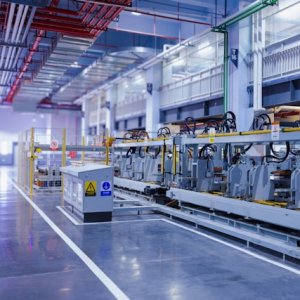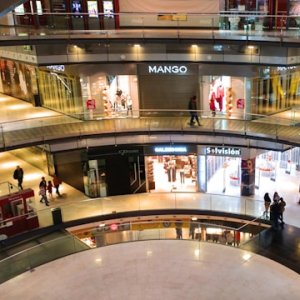
Cities Starting to Ressemble Problem, Not Solution
Latin America is one of the most urbanized regions of the world, with more than 70 percent of its population living in cities, but Mexico’s data is even higher. According to World Bank statistics, by 2015 almost 79 percent of Mexicans were living in an urban settlement. Unfortunately, what was supposed to be the solution for millions is not fulfilling its purpose. The urbanization of the population has not meant richer, healthier or happier citizens. On the contrary, it seems as if inequality and tension have increased. Cities, which were supposed to be the solution, are starting to look like a part of the problem. Modern urban sprawl, as it is commonly known, equals a disordered, disconnected, saturated and polluted city and is a major contributor to urban problems.
But where does natural urban sprawl come from? That is easy: movement. The classic city’s design was defined by its transportation system in a cause-effect relationship. When traveling systems other than our own feet were introduced, people could easily start living farther from the old city, and so they did, and urban sprawl appeared. That is why many older neighborhoods were once the sprawl of decades ago in our cities. The introduction of automobiles, which not only includes cars but also public transport, became a defining feature of the design of our cities because they allowed people to live far from the city and still be able to commute into it.
According to Edward Glaeser in his book “Triumph of the City,” the sprawl generated by the introduction of a transportation system generally goes through three phases: technological breakthroughs that enable the large-scale production of a faster way to move; the new transportation network is built to accommodate this new technology, or equally, the creation of new infrastructure; and people and companies change their geographic locations to take advantage of this new mode of transport, and so sprawl happens.
In this way urban sprawl is not negative in itself. In fact, suburbanization, which is a common effect of the sprawl, should not be considered intrinsically bad. The problem with sprawl appears when it does not come from a natural process but from a commercial condition propitiated artificially by the government or by developers, mainly due to economic efficiency motives and speculation, even when there was no need for it. If the expansion of the city does not come with a growing process that respects the contiguity of the city, then it creates new spaces whose value will grow within a speculation process, and that will eventually continue feeding the artificial sprawl phenomenon.
As we said before, sprawl benefits and is propitiated by a combination of both aggressive commercial action by the developers and a government public policy that stymies the inner development of the cities in favor of its farther regions, promotes housing ownership as a tenet, or even worse, fails to implement policy at all.
In that case, we should ask ourselves: Is the housing ownership policy bad for cities? We would not dare say it but one thing we cannot deny is that these kinds of policies eventually end up pushing people out of cities. If we encourage our people to buy their own houses, they will probably have to look for a property in the suburban area of the city because those are the kinds of properties that most people can afford. Land the inner cities has considerably raised its price, which at the same time has caused a phenomenon whereby if it ever gets to be developed, its cost will be way higher. It is a vicious circle and the more the sprawl grows and the city expands, the more the land in the inner city will cost, and the more it costs, the more it will continue its expansion.
Another characteristic that comes along with sprawl is the decrease in the density of the city, which unfortunately commonly comes along with an increase in the usage of cars. There is therefore a massive rise in driving traffic and energy use, affecting the sustainability of our cities and reducing the quality of life of a portion of the population, mainly the poorest. An even worse problem is that this will also provoke a new vicious circle. The common reaction to the increase in the usage of cars would be to implement a highly developed public transportation system, or to improve the existing one. This is only efficient and affordable if there exists enough density to justify the routes of this new system. If there is not enough density, then the cost of the new system with its own infrastructure cannot be justified because of its low prospected efficiency, earmarking cars as the main, if not sole, mode of transport within our cities. So, how should we deal with the apparently unavoidable sprawl of our cities to prevent them from becoming more inefficient and less equitable?
There are two strategies that must be implemented in our cities: infill and regeneration. In Mexico, we are not creating public policies to regenerate and fill the city that already has infrastructure. Vertical development, with its own particularities, is a good way to fill or regenerate the empty spaces within our cities but municipal governments are not promoting it. They should create an easier environment for its development, which should include new policies and incentives for taxation, simpler procedures and development rights to increase density and verticalize the empty lots in the cities. Ironically, some of these figures already exist in some states, though they are not being used.
Moreover, there is a great opportunity for these policies to combine the new models of the financial system of housing and infrastructure for mass public transportation. That is the key to give continuity to a future vision that has begun with the statement of the circles of containment in the Mexican cities (U1-U2-U3) conducted by the National Housing Commission (CONAVI) in January 2013.
Therefore, efficient infrastructure development should be taken in consideration when addressing the need to regenerate the inner blanks of our cities, but above all, we should consider consolidating walkable districts. There is no way to have enough infrastructure if we keep developing our cities under a horizontal low-density model. If we do not seek to raise the density within our cities, we will be condemning the new inhabitants of our suburbs to saturate every single infrastructure project we make, and that is enough to consider our infrastructure as inefficient.
Mexico is a country facing an urban crisis, a condition that could be followed by a financial and a social crisis if we continue exercising only an urban expansion policy as the unique vision of urban development, and if we simply limit ourselves to building infrastructure as an answer to the expansion of our cities, and not to its natural regeneration. The growth and expansion of cities is a natural process, but it can become a social and urban predator if we do not face it properly and in the right time.
















